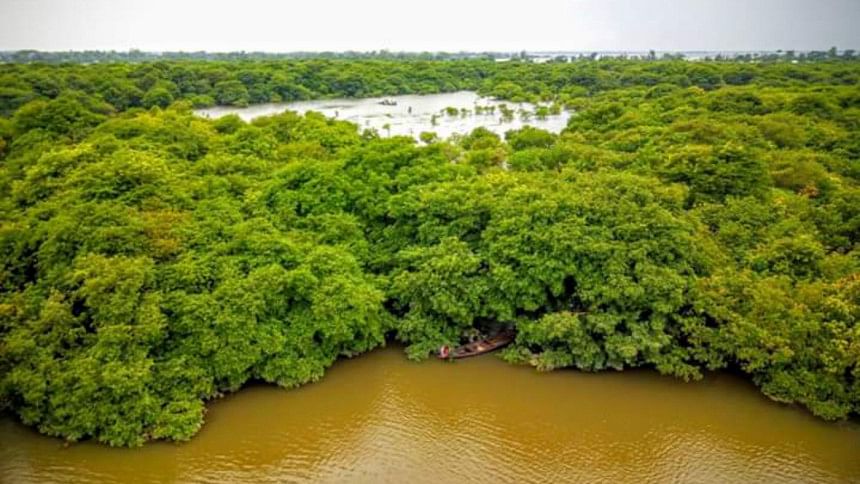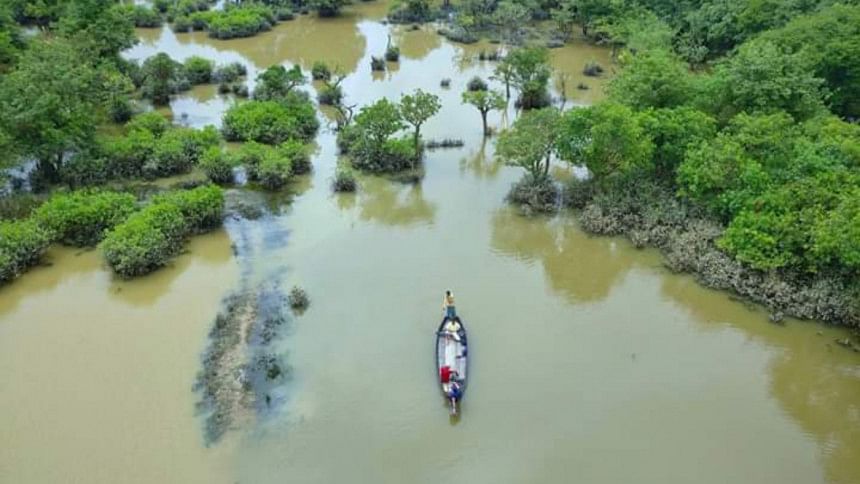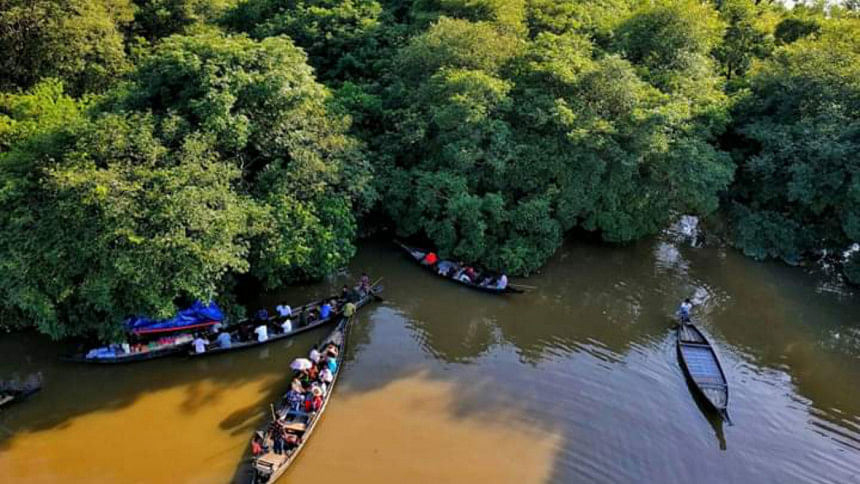Beautiful Ratargul

The Meghalaya river pours into the Gowain, and a narrow stream flows through the Chengi canal to flood the entire region of Ratargul — not only the only freshwater swamp in the country, but also among very few in the entire world.
Although the Sunderbans, the largest mangrove forest, gets noticed for all the right reasons, monsoon in Ratargul is another surreal experience that can only be felt, and never fully explained. As the small boats move through the snaking waterways canopied by the lush foliage, often spreading as high as 15 metres, many feel, and some for the first time, that we are indeed part of nature; the environment around us.

Ratargul has the distinguished feature of supporting a diverse ecosystem of flora and fauna.
Although the forest was completely natural at one point, the Forestry Department of Bangladesh has introduced some trees in the area. A conservative figure puts the number of plant species in the swamp at over 70. The diversity of animals and birds is equally mesmerising.

Monsoon is the right time to see Ratargul in its best; it seems that during the rainy season, Ratargul radiates the unmatched beauty that draws the large crowd from distant places.
One needs to take permission from the forest office to visit the forest. Local boats can be hired to traverse the swamp. A popular destination in the wilderness is the tower, which offers an aerial view of the entire swamp.

Essentials: After reaching Sylhet city, travel to the Fatehpur Union of Gowainghat in Sylhet district, south of the river Gowain. It is about 26 km from Sylhet city. One has the option to take CNGs, although cars too, can be rented.
Tourists should be reminded that there are no dining options in the vicinity of the swamp. So, make sure you take some light meals that will last the two-way journey. And assuming you are travelling in monsoon, do not forget the umbrellas and the raincoats.

Photo: Syed Asaduzzaman Suhan

 For all latest news, follow The Daily Star's Google News channel.
For all latest news, follow The Daily Star's Google News channel. 



Comments